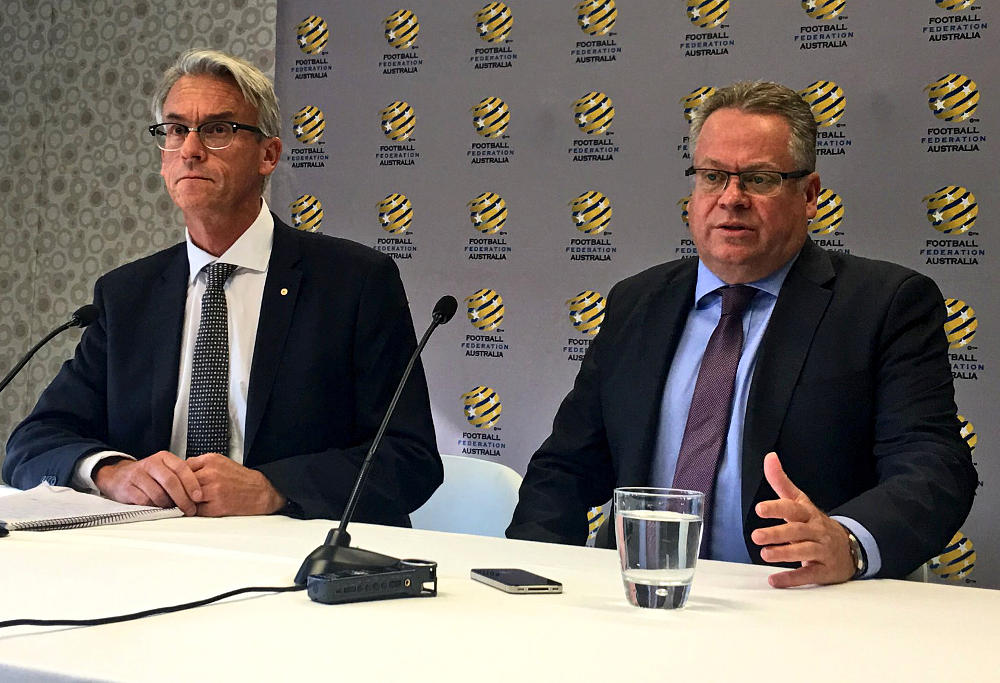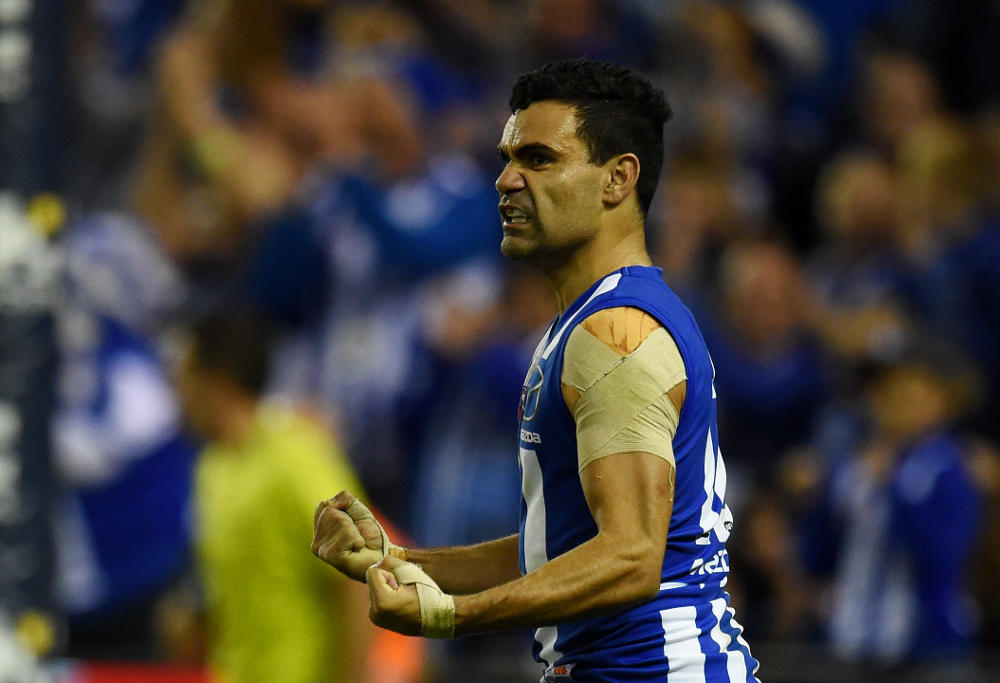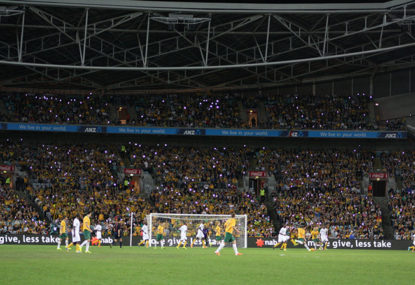My neighbour has featured in a few articles of mine. He’s a terrific bloke; intelligent, witty and observant.
Liverpool is his team of choice and he loved the legends game at ANZ Stadium earlier in the year. He has dipped his toes in the waters of the Sydney derby and keeps up to date with local results, if only at arms-length. The A-League still remains something of a mystery to him.
When I listen to him speak, there appears to be no genuine respect for the quality produced on the pitch, nor for the decision to play through the summer months and he feels the game would run a poor third to rugby league and Australian rules in the dense winter market.
He may be right on both counts, or perhaps he is a narrow-minded Aussie with his thinking entrenched in those traditional winter codes, always sceptical of the beast that is football and its growth in Australia.
Whichever of these is true, the reality is that when football discussion shifts to increased crowds, memberships and ratings, he is the potential increase in those figures.
People who love football in this country are already embracing the A-League. The FFA doesn’t need to lure people who already love football to the game. Real growth lies in attracting new people to the game, like Dave at number 25.
Expansion looms on the horizon. Perhaps a team in the southern suburbs of Sydney with access to the excellent catchment of the Illawarra or a second Brisbane team will add to the league, as would a return of South Melbourne, yet the reality is that there doesn’t appear to be a market ready to immediately provide a crowd of 15,000 to every home fixture.

Expansion will provide new excitement and interest to the game in Australia, yet true growth lies in attracting and converting fringe fans who many possess nothing more than a passing interest or curiosity in the local competition.
The problem lies in the fact that the majority of those ‘fringe’ or ‘potential’ fans are susceptible to the stereotypes and common misconceptions that circle football and result in the aggressive attacks that often occur in the media.
Jade North’s simulation last weekend is the perfect example of the fickle dimension that surrounds the luring of potential new fans, members and supporters to our growing league.
In short, it was pathetic, cowardly and humorous. The game is better than the rather comical pantomime that North produced.
The natural justice of Nicolas Colazo’s goal brought some sense of honour to the situation, yet North’s prostrate frame lying in agony just outside the box was a bad look for the game.
A game, mind you, that is still trying to forge its way into the consciousness of curious fringe fans who are cautiously dipping their feet into the A-League.
Just as I sense the remote possibility of luring my neighbour into the passionate and tribal elements of football, someone like North comes along and gives him every reason to remain sceptical and suspicious.
These suspicions – that is, distaste for the unfair and unjust – are an innate part of Australian culture. Australians are offended by actions of cowardice that insult the legacy created by our brave soldiers who defended this country in times of war and our migrant communities who emigrated to this country and faced discrimination and prejudice in the process of forging their own identity.
We are a tough country whose origins lie in persistence, courage and determination. Seeing simulation in a football game contradicts those values.
But hang on, don’t those league, union and AFL-loving crowds have their own forms of simulation and cowardice that, unlike football, are glossed over by the sympathetic and soft media coverage they receive?
Bloody oath they do!
Anyone with any knowledge of AFL will be aware of the ability of forwards to duck their heads as soon as contact is made by a trailing defender in order to gain a free kick, or the tirade of abuse launched at Adam Goodes throughout his career for a perceived willingness to exaggerate the impact of contact and win ‘cheap frees’.
Season 2016 saw another heated debate on the issue of players taking dives to draw free kicks. The ducking saga around Lindsay Thomas and the pointed questioning of his integrity as a footballer are testament to the issues that exist around simulation in the AFL.

Tweaking of the rules in regard to tackles and high contact were somewhat ineffective and scope for players to use the rules to their advantage remains clearly evident.
League continues to grapple with the ‘staying down’ that occurs when players are hit high. Sometimes they have been collected across the moosh and are indeed incapacitated. However, milking penalties is so prevalent that referees use the term on the run. Seeing defenders attempting to drag tackles players to their feet knowing full well that they are not injured is an ugly part of the game.
Rugby union is farcical when it comes to simulation. Incredibly overweight forwards sit in an upright position on the turf with the sole intention of providing respite for their similarly slovenly forward allies. A trainer squirts a bottle of water into their mouth, or on their knee in some cases, in an attempt to rejuvenate them.
All the while, the forwards recover and the time spent attacking and attempting to break the line is diminished. The simulation is obvious and insulting.
Despite all of this, Australia’s history and connection to these games seems to make them impervious to the same criticisms levelled at football. In short, these games are supposedly part of the Australian psyche and reflect the values that the nation espouses.
Football is seen as the foreign game, where the cowardice and theatrics of the players wins free kicks and produces undeserved and ‘cheap’ victories that subsequently annoy the so-called Aussie blokes in sports bars around the country.
Seeing tennis players fake and simulate injuries when faced with challenging situations at Melbourne Park each January, only to recover after the momentum of the opponent has been stunted, also reeks of simulation.
North’s actions set football back and as the incident is replayed ad nauseam and the stereotypical and narrow-minded attitudes of the masses follow.
The most positive step that could be taken by the FFA would be to identify clear cases of simulation and act accordingly. An offence such as North’s should carry a $5,000-$10,000 fine.
This would put football well ahead of the major winter codes who, at the current time, review matches yet seemingly ignore the unsportsmanlike simulation of players, instead focussing on foul play.
In order for football to garner the same level of respect offered to the other codes, it must exist to a higher standard. It grapples with stereotypes that, quite frankly, exist due to ignorance and animosity.
With players like Jade North fined and punished for the nonsense he produced on the weekend and a media prepared to be consistent in its criticisms of simulation across all codes, football may just have a chance of eliminating the negative perception.
That perception has unfortunately developed, not because football is soft, cowardly and at odds with Australian values, but more so because of a tendency to apply stereotypical and narrow-minded views to the game.
A game that still fights to earn respect among a significant percentage of Australians and my mate Dave next door.































































































